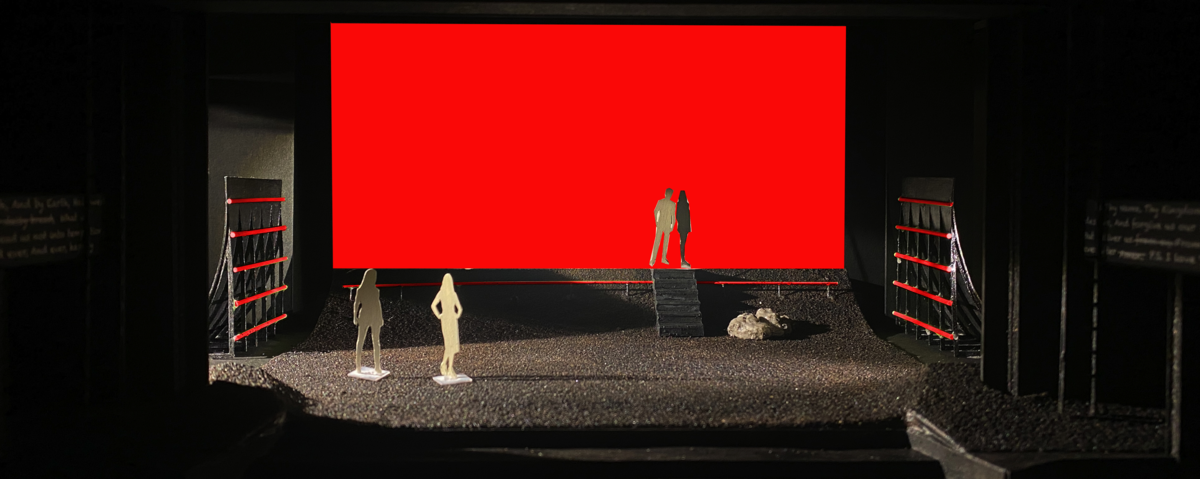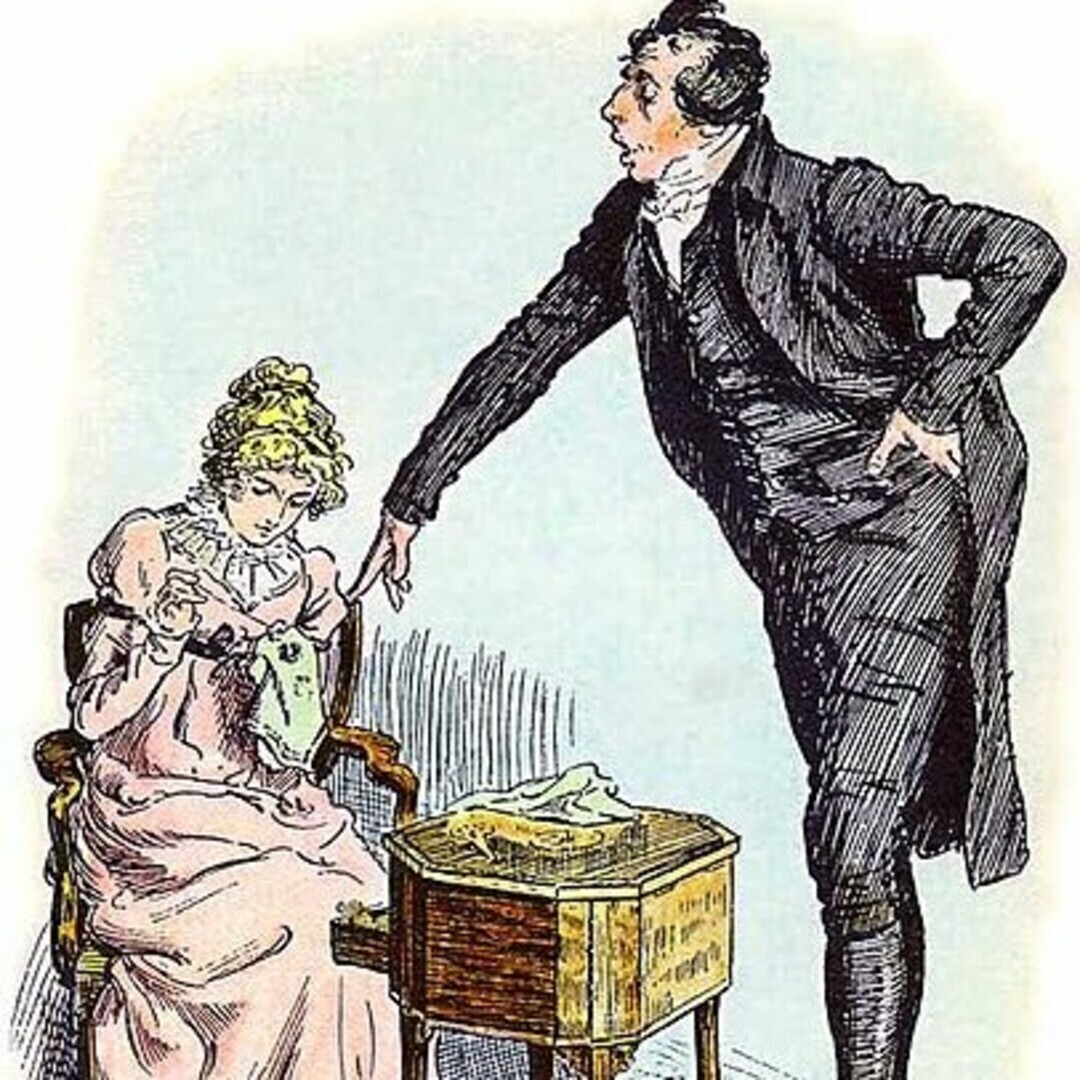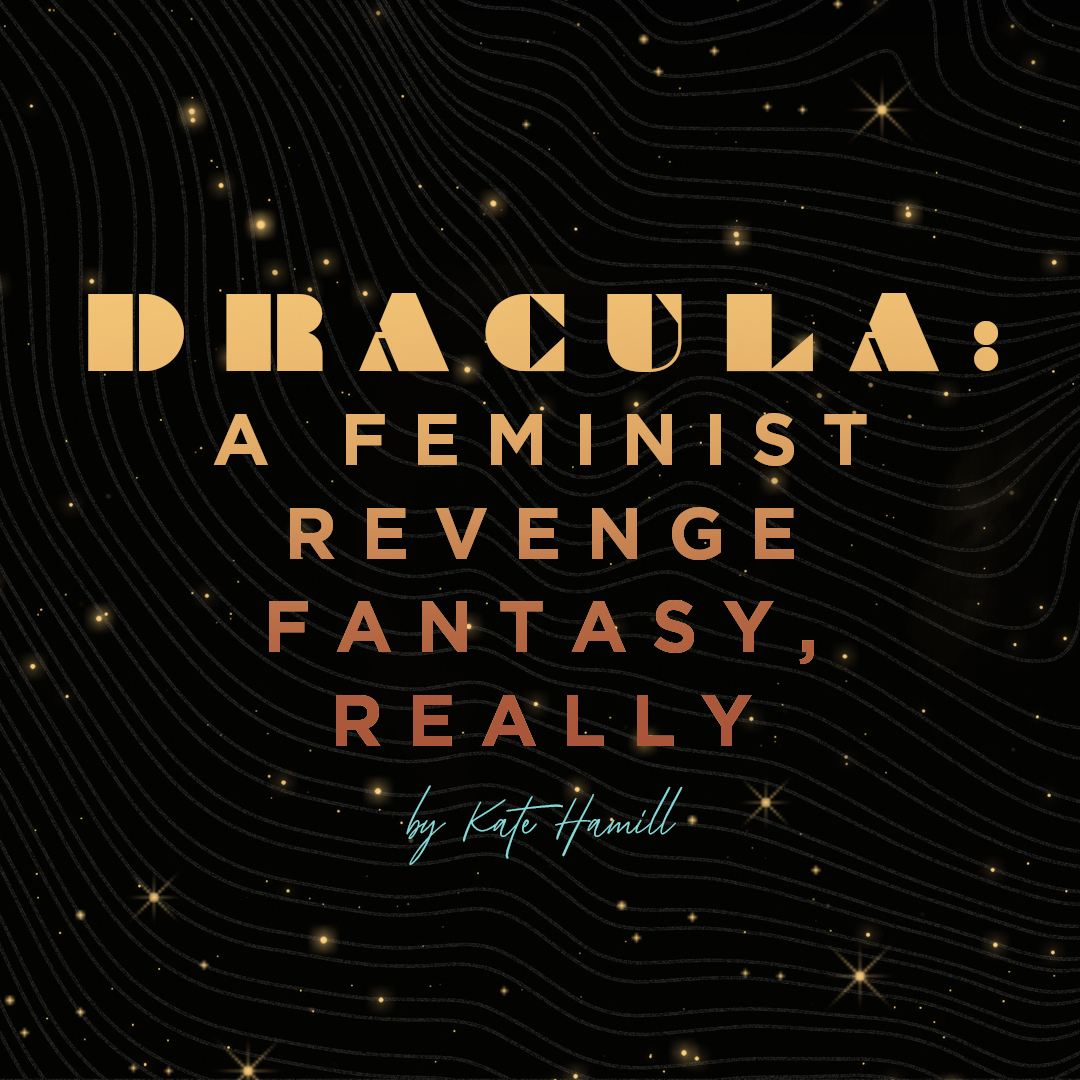Dracula & Vampirism: A History
Bram Stoker
A short biography of Bram Stoker, written by a distant relative.
Abraham (Bram) Stoker was born on November 8th, 1847, in Clontarf, then a popular holiday resort on the outskirts of Dublin, Ireland. He was the third of Abraham Stoker, Sr. and Charlotte Thornley Stoker’s seven children. His brother William Thornley was two years older; sister Matilda one year older; brother Thomas two years younger; brother Richard Nugent four years younger; sister Margaret six years younger, and brother George seven years younger. As a child Bram was so sickly as to be confined to his bed for much of his first seven years, subject to bloodletting and probably not expected to live. He spent much of this time watching the lives of family and neighbors from his bedroom window and listening to his mother’s stories of Irish history and legend. Both with the melancholic mood of the times, plagued as they were by disease and famine, and the darkly wry, slightly fantastical nature of Irish narrative, many of these tales were somewhat gothic in character—supernatural mixed with the real and believable, bound up in dark mood and lyrical language. It is easy to envision how young Bram’s storytelling instincts may have been cultivated.
At the time of his enrollment at Trinity College (1864), Bram had not only survived his still-undiagnosed childhood illness, but had bounced back in a big way. He grew into a tall, strong, sociable character and would become a model ‘liberal arts man,’excelling in oratory, debate, and athletics. He received a Bachelor of Arts degree in 1870 and a Master of Arts five years later, and as a student had the rare distinction of serving in the highest office of the College Historical Society and the University Philosophical Society, Trinity’s pre-eminent student scholarly organizations (the former was oriented toward debate; the latter toward critical reading and discussion). Bram was an outstanding university athlete, collecting prizes in shot put, weightlifting, high and long jumping, gymnastics, and race walking. He counted his recognition as “Dublin University Athletic Sports Champion” (1867) among his proudest collegiate achievements.
It seems he chafed against the regimented academic program that governed Trinity in his time—in one address to the Historical Society he lamented the curriculum’s neglect of history, oratory, and literature. Given what we know of him, perhaps this is understandable. The lasting impression one gets of Bram’s life as a student and young adult in Dublin is that of a ‘big man on campus’ (his charging ballroom dance was once likened to a fixed-bayonet attack) whose prominent figure only grew after graduation. His modest achievements in grade point academics and his extended tenure as a student may also have had to do with his beginning employment with the Civil Service—following in his father’s footsteps—in his second year at Trinity.
The Civil Service would become another major part of Bram’s young-adult life. Tales of riotous social functions attest to his bon vivant presence, while he earned further athletic renown organizing and competing in the Civil Service’s popular annual sports competition. Moreover he was integrally involved in the substantial increase in size and influence of his office, the Petty Sessions Clerks. In short order, Bram rose to the head of his small cohort of eight junior clerks. It was soon recommended that the office be expanded and Bram be appointed to a newly created position of senior authority and independent operation, the Clerk of Inspection, responsible for auditing the offices of other districts. In 1895, only seventeen years after Bram left for the Lyceum, the office had grown to include four hundred and six clerks, and with over six hundred sets of books from various districts falling under the Inspector’s jurisdiction. Clearly, the big man left big shoes to fill.
Ironically, Bram’s first book, The Duties of Clerks of Petty Sessions in Ireland—a manual that formalized the office’s functions and in many ways enabled its rapid expansion—marked the end of his Civil Service career; it was published in 1879, shortly after he resigned to accept Sir Henry Irving’s offer to manage the Lyceum Theatre in London. That is not to say Duties of Clerks was Bram’s first writing foray. During his university and Civil Service years he also penned the first of many short stories, as well as theatre reviews written gratis for the Dublin Evening Mail—which, perhaps not coincidentally, was edited and co-owned by Sheridan Le Fanu, whose 1872 vampire novel Carmilla is counted among Dracula’s likely influences. This was also the period in which Bram compiled the journal of observations, verse, and witty musings that is now published as The Lost Journal of Bram Stoker: The Dublin Years (2012).
In a reflection of the serendipity that, in hindsight, often characterizes Bram’s life, his theatre reviews for the Dublin Evening Mail also led him to meet the English actor Sir Henry Irving, who would become one of his closest friends. Irving was impressed by his insightful and evenhanded review of his performance of Hamlet, and the two became fast friends. In 1878, Bram accepted Irving’s invitation to join him in London as business manager of his new Lyceum Theatre. Bespeaking Irving’s prominence as an actor—and the increasing prestige and prominence of the theatre—Irving would receive a knighthood in 1895, the first actor ever to be so honored. Prior to departing for London, Bram married Florence Anne Lemon Balcombe, known as one of the most beautiful women in Dublin, with whom he would have one son, Irving Noel Thornley Stoker (born Dec. 1879).
Managing London’s Lyceum Theatre (1878-1904) would be the primary occupation of Bram’s adult life. His official duties involved coordinating the theatre’s local seasons and international tours, accounting its financial records, and acting as secretary for its owner, his friend, Sir Henry Irving. Anyone who has worked in theatre can tell you, however, that one’s official duties and one’s actual activities form rather an interesting Venn diagram. Bram acted as everything from publicist to part-time stage crew—one story in Paul Murray’s excellent biography, From the Shadow of Dracula, recalls a play having a gondola cross the stage, and when the sheet disguising the boat’s interior was brushed aside, “the audience gasped at the figure of Stoker in evening dress…working the machinery that propelled the gondola!”
Bram’s public-facing position—he also served as a de facto social host for the Lyceum’s high-profile guests—led to his acquaintance with many of the leading figures of his day, including Sir Arthur Conan Doyle, Alfred Lord Tennyson, Lord and Lady Randolph Churchill, William Gladstone, and from the American tours Mark Twain, Walt Whitman, Theodore Roosevelt, and Buffalo Bill Cody, among others. His correspondence shows him sharing ideas and input on manuscripts and parliamentary debates with authors and politicians alike, and his record of promoting others’ work both in the Lyceum and in review meant that his own work, where merited, was generally made available to wide and often favorable reception. Contrary to popular misconception, this was true also of Dracula, which received quite a positive pattern of critical opinion, as scholar John Edgar Browning has demonstrated. Browning found eighty-seven newspaper and journal reviews of Dracula dating from 1897 to 1913: seventy rated positive, three rated negative, and fourteen were mixed.
Although Dracula was well received in his time, Bram never could have imagined the lasting, international impact it would have. Popular theatrical adaptations in the years following Bram’s death (1912), and particularly Universal Studios’ 1931 blockbuster movie starring Bela Lugosi, led Dracula to become one of the best-known novels in the world. Since its publication, it has never gone out of print, it has been translated into every major language, and it has inspired hundreds of novels, short stories, and movies. From Halloween costumes to children’s cereal, Count Dracula has permeated just about every aspect of our culture.
Bram began working on the story that would become Dracula in 1890 (his original title was ‘The Un-Dead,’ and his Count, hailing from Austria, was called ‘Wampyr,’ until Bram came across the name ‘Dracula’ in the Whitby library while on vacation), and from an 1897 interview with Jane Stoddard of the British Weekly, we know he gave the actual writing period to be about three years. That the novel took a total of seven years to complete should not be surprising in light of Bram’s ‘day job’ at the Lyceum, and that he completed several other books and stories during this time (including The Snake’s Pass, "Seven Golden Buttons," The Watter’s Mou, The Shoulder of Shasta).
Bram Stoker passed away on April 20th, 1912, in London. His remains rest at London’s Golders Green Crematorium.
W. PARKER STOKER 2018
Dracula
Below is an article written by Greg Buzwell for the British Library titled “Dracula: vampires, perversity and Victorian anxieties:”
The vampire is a complicated creature: caught between life and death, at once alluring and horrifying. Greg Buzwell considers the way the novel reflects the fears that haunted late 19th-century society – fears of immigration, sexual promiscuity and moral degeneration.
The vampire has always been a contradictory figure: on the one hand a repellent blood-sucking creature crawling from the grave, and, on the other, a strangely alluring representation of nocturnal glamour and potent sexuality. The very concept of vampirism horrifies and fascinates in seemingly equal measure, and much of this perverse duality stems from the most famous vampire novel of them all – Bram Stoker’s Dracula, first published in 1897.
Anxiety and the vampire in late-Victorian Britain
Dracula – described by a reviewer in the 26 June 1897 edition of Punch as ‘the very weirdest of weird tales’ – presents a series of contrasts and clashes between old traditions and new ideas. Stoker uses the figure of the vampire as thinly-veiled shorthand for many of the fears that haunted the Victorian fin de siècle. Throughout the novel, scientific rationality is set against folklore and superstition; old Europe is set against modern London; and traditional notions of civilized restraint and duty are threatened at every turn by the spread of corruption and wanton depravity.
Dracula’s forays into London, for example, and his ability to move unnoticed through the crowded streets while carrying the potential to afflict all in his path with the stain of vampirism, play upon late-Victorian fears of untrammeled immigration. The latter was feared as leading to increased levels of crime and the rise of ghetto communities. Dracula creates several lairs in the metropolis, including one in Chicksand Street, Whitechapel – an area notorious for the Jack the Ripper murders of 1888 – and one in Bermondsey, the location of Jacob’s Island – the low-life rookery immortalized by Charles Dickens in Oliver Twist. The Ripper murders had created a storm of hysteria in the press with the local Jewish community bearing the brunt of the outbursts. The secretive nature of the Jewish ghetto was also cited as a reason why the murders were never solved, with the Jews seen as having closed ranks around one of their own number who had committed the crimes. Such fears, which Dracula mirrors very closely, ultimately lay behind the introduction of The Aliens Act of 1905, which was put in place largely to stem immigration from Eastern Europe.
The act of vampirism itself, with its notion of tainted blood, suggests the fear of sexually transmitted diseases such as syphilis and, more generally, the fear of physical and moral decay that was believed by many commentators to be afflicting society. Towards the end of the book the character of Mina, who stands for everything Stoker sees as morally upright and respectable, observes ‘The Count is a criminal, and of criminal type, Nordau and Lombroso would so classify him’ (ch. 25). The Hungarian social critic Max Nordau’s influential book Degeneration, an impassioned attack on what he regarded as the prevalent air of hysteria and moral decline in Western Europe, had been translated into English in 1895. Degeneration was dedicated to the Italian criminologist Cesare Lombroso whose work used a similar pseudo-Darwinian language to analyze the psychology of the criminal mind. In an era noted for its foppish dandies, its pleasure-seeking aesthetes and the rise and fall of brilliantly flamboyant figures such as Oscar Wilde, Stoker is deliberately aligning Count Dracula with everything ‘respectable’ late-Victorian society would have regarded as morally corrupting, criminal and perverse.
Sex and the Vampire
Victorian literature tends to present the vampire myth as a sexual allegory in which English female virtue is menaced by foreign predators. For example Sheridan Le Fanu’s short story ‘Carmilla’ (1872) places the virtuous English girl Laura at the mercy of the predatory East European vampire of the title. Dracula follows a similar pattern, with the Count’s attentions focused in particular on Mina, a woman who selflessly (and symbolically) spends her honeymoon nursing her sick husband in a convent, and the beautiful Lucy Westenra, who is, by contrast, dangerously modern in her ways. All women, though, are seemingly at risk: as the Count suggests when he pointedly taunts Professor Van Helsing and his followers by saying ‘Your girls that you all love are mine already’ (ch. 23). During the course of the book Dracula attacks both Mina and Lucy; but Mina, due to the traditional Victorian qualities of determination and loyalty towards her husband, is able to resist his advances. The rather more free-spirited Lucy is not so lucky.
Some critics have argued that Stoker uses the character of Lucy to attack the concept of the New Woman – a term coined towards the end of the Victorian era to describe women who were taking advantage of newly available educational and employment opportunities to break free from the intellectual and social restraints imposed upon them by a male-dominated society. Those who took a hostile attitude towards the New Woman saw her either as a mannish intellectual or, going to the opposite extreme, an over-sexed vamp. Stoker certainly portrays Lucy as racily ‘forward’ in her desires. At one point Lucy receives three proposals of marriage on the same day and comments, as she regrets having to turn down two of the proposals: ‘Why can’t they let a girl marry three men, or as many as want her, and save all this trouble?’ (ch. 5). Lucy’s moral weakness allows Dracula to prey repeatedly upon her during the night, and only a series of desperate blood transfusions from each of her former suitors – a sickly symbolic echo of Lucy’s desire for three husbands (and thus three lovers) – delay, for a while, the inevitable. As Lucy joins the ranks of the ‘undead’ she herself becomes a vampire, leaving her tomb by night to feed upon a succession of defenseless children in a parodic distortion of the Victorian ideal of maternal femininity. When confronted by Van Helsing after one such raid, Lucy behaves in a manner that would have been viewed as an affront to both femininity and motherhood: ‘With a careless motion, she flung to the ground, callous as a devil, the child she had clutched strenuously to her breast, growling over it as a dog growls over a bone’ (ch. 16). For Stoker, Lucy’s decline from the Victorian feminine ideal to the perceived selfish unnaturalness of the New Woman is complete.
Dracula and Modernity
Bram Stoker includes numerous references to the very latest ideas and inventions in his novel. Dr Seward keeps his diary using a phonograph which was a relatively new and expensive piece of technology in 1897; similarly, references to Kodak cameras, portable typewriters, telegrams being sent across Europe and the blood transfusions carried out by Professor Van Helsing all reflect the rapid technological changes taking place in the late-Victorian period. In addition, as already shown in the earlier mention of Max Nordau and Cesare Lombroso, the characters in the novel frequently refer to contemporary theories in medicine and psychology.
The entire novel is presented in the form of letters, diaries and newspaper cuttings: so the scientific method of observing and recording information is integral to both the structure of the book itself, and to the attempts of Van Helsing and his friends to destroy Dracula. Set against this atmosphere of scientific advance, however, are the intangible concepts of religious faith and the supernatural. Van Helsing may use blood transfusions in an attempt to keep Lucy alive, but he also resorts to garlic flowers and crucifixes to hold the vampire at bay. Throughout the novel there is a sense that Dracula, with his ability to pass through keyholes like a mist and his affinity with bats, rats and wolves, represents the inexplicable; an alien force which science on its own cannot defeat. Early in the novel Jonathan Harker observes the Count climbing lizard-like down the outside of the castle walls. Unsurprisingly the sight shakes him to the core. Returning to his room he writes ‘… in my diary in shorthand all that has happened since I closed it last. It is the nineteenth century up-to-date with a vengeance. And yet, unless my senses deceive me, the old centuries had, and have powers of their own which mere “modernity” cannot kill’ (ch. 3). Dracula suggests modernity and science may have their limits and, faced with the supernatural figure of the Count, Harker fears such limits may have been reached.
Written by Greg Buzwell
Greg Buzwell is Curator of Contemporary Literary Archives at the British Library. He has co-curated three major exhibitions for the Library – Terror and Wonder: The Gothic Imagination; Shakespeare in Ten Acts and Gay UK: Love, Law and Liberty. His research focuses primarily on the Gothic literature of the Victorian fin de siècle. He has also edited and introduced collections of supernatural tales by authors including Mary Elizabeth Braddon, Edgar Allan Poe and Walter de la Mare.
The text in this article is available under the Creative Commons License.
History of Vampirism
Below is an article written by Becky Little for National Geographic titled “The Bloody Truth About Vampires:”
The Bloody Truth About Vampires
Vampires are fodder for books, movies, and Halloween costumes. But for hundreds of years, they were scapegoats for disease.
By Becky Little
Published October 26, 2016
The traits of modern-day vampires are pretty well established. They have fangs, drink human blood, and can’t see themselves in mirrors. They can be warded off with garlic, or killed with a stake through the heart. Some, like Dracula, are aristocrats who live in castles.
But vampires didn’t start out so clearly defined. Scholars suspect that the modern conception of these Halloween monsters evolved from various traditional beliefs that were held throughout Europe. These beliefs centered around the fear that the dead, once buried, could still harm the living.
Often, these legends arose from a misunderstanding of how bodies decompose. As a corpse’s skin shrinks, its teeth and fingernails can appear to have grown longer. And as internal organs break down, a dark “purge fluid” can leak out of the nose and mouth. People unfamiliar with this process would interpret this fluid to be blood and suspect that the corpse had been drinking it from the living.
Bloody corpses weren’t the only cause for suspicion. Before people understood how certain diseases spread, they sometimes imagined vampires were behind the unseen forces slowly ravaging their communities. “The one constant in the evolution of vampire legend has been its close association with disease,” writes Mark Collins Jenkins in his book Vampire Forensics. Trying to kill vampires, or prevent them from feeding, was a way for people to feel as though they had some control over disease.
Vampires of Europe
Because of this, vampire scares tended to coincide with outbreaks of the plague. In 2006, archaeologists unearthed a 16th-century skull in Venice, Italy, that had been buried among plague victims with a brick in its mouth. The brick was likely a burial tactic to prevent strega—Italian vampires or witches—from leaving the grave to eat people.
Not all vampires were thought to physically leave their grave. In northern Germany, the Nachzehrer, or “after-devourers,” stayed in the ground, chewing on their burial shrouds. Again, this belief likely has to do with purge fluid, which could cause the shroud to sag or tear, creating the illusion that a corpse had been chewing it.
These stationary masticators were still thought to cause trouble aboveground, and were also believed to be most active during outbreaks of the plague. In the 1679 tract “On the Chewing Dead,” a Protestant theologian accused the Nachzehrer of harming their surviving family members through occult processes. He wrote that people could stop them by exhuming the body and stuffing its mouth with soil, and maybe a stone and a coin for good measure. Without the ability to chew, the tract claimed, the corpse would die of starvation.
Tales of vampires continued to flourish in southern and eastern European nations in the 17th and 18th centuries, to the chagrin of some leaders. By the mid-18th century, Pope Benedict XIV declared that vampires were “fallacious fictions of human fantasy,” and the Hapsburg ruler Maria Theresa condemned vampire beliefs as “superstition and fraud.”
Still, anti-vampire efforts continued. And, perhaps most surprisingly of all, one of the last big vampire scares occurred in 19th century New England, two centuries after the infamous Salem witch trials.
From the Old World to the New
In 1892, 19-year-old Mercy Brown of Exeter, Rhode Island, died of tuberculosis, then known as consumption. Her mother and sister were already dead, and her brother Edwin was sick. Concerned neighbors worried that one of the recently deceased Brown women might be harming Edwin from the grave.
When they opened Mercy Brown’s grave, they found blood in her mouth and her heart and took this to be a sign of vampirism (though they didn’t call it that). The neighbors burned Mercy’s heart and mixed the ashes into a potion for Edwin to drink—a common anti-vampire tactic. The potion was meant to heal him; instead, he died a few months later.
This wasn’t an isolated incident. Folklorist and Food for the Dead author Michael Bell estimates that there are 60 known examples of anti-vampire rituals in 18th- and 19th-century New England, and several others elsewhere in the country. These rituals were most common in eastern Connecticut and western Rhode Island, says Brian Carroll, a history professor at Central Washington University who is writing a book on the subject.
Carroll believes these anti-vampire rituals were “introduced as a medical procedure at the time of the American Revolution” by German doctors who worked for the Hessian forces. Because of this, he thinks the New England vampires were based on the German Nachzehrer. Unlike blood-sucking Romanian vampires, New England’s vampires stayed in their grave, harming the living through “sympathetic magic” from afar, he argues.
Bell, however, believes anti-vampire practices in New England came from many places and that the suspected New England vampires were actually more akin to Romanian vampires than the Nachzehrer. Like Romanians, New Englanders “were looking for liquid blood in the vital organs, not evidence of shroud chewing,” he says. The anti-vampire remedy of “cutting the heart out, burning it to ashes, and giving the ashes to the sick person or sick people” was also practiced in Romania.
Whatever the source of these beliefs in New England, they were driven by the same social concerns as those before them: a fear of disease and a desire to contain it.
This 16th-century skull was buried in Venice, Italy, with a brick in its mouth. The brick was likely meant to prevent the person from leaving the grave to eat people.
Post-Vampire
During the vampire panic in New England, vampires were finding a new role in European books like The Vampyre (1819), Carmilla (1871-72), and Dracula (1897), as well as in vampire-themed plays. Though drawn from folk legends and past vampire scares, these aristocratic, sexual vampires were more like the vampires we know today.
Vampire panics died down in the 20th century as these fictional monsters replaced folk beliefs (and as medical knowledge improved); however, there was a strange resurgence in the late 1960s, when Seán Manchester, the president of the British Occult Society, said that a vampire was causing people to see strange things in London’s Highgate Cemetery.
Newspapers had already covered reports of a tall figure with burning eyes and other spectral sights floating in the cemetery, and journalists quickly picked up Manchester’s theory that these sightings were the work of an eastern European vampire. Newspapers even embellished his claims a bit, calling the figure a “king vampire,” or writing that the vampire had practiced black magic in Romania before traveling to London in his coffin.
In 1970, Manchester told a TV news team that he planned to exercise the vampire on Friday the 13th. That night, hundreds of young people turned up at Highgate Cemetery to see him perform an exorcism (which he ended up not doing).
The Highgate panic wasn’t a case of vampires being scapegoated for disease but rather a media sensation and an instance of “legend tripping” (young people going to a supposedly haunted place to test their bravery).
In the history of vampire legends, the Highgate incident is a modern phenomenon. It has less to do with the desire to control a community’s health and a lot more in common with modern scares, like the creepy clown sightings that went viral this year—even if people don’t believe it, they’re still drawn to the hype.
Vlad the Impaler
It’s thought Bram Stoker named Count Dracula after Vlad Dracul, also known as Vlad the Impaler. Vlad Dracul was born in Transylvania, Romania. He ruled Walachia, Romania, off and on from 1456-1462.
Some historians describe him as a just—yet brutally cruel—ruler who valiantly fought off the Ottoman Empire. He earned his nickname because his favorite way to kill his enemies was to impale them on a wooden stake.
According to legend, Vlad Dracul enjoyed dining amidst his dying victims and dipping his bread in their blood. Whether those gory tales are true is unknown. Many people believe these stories sparked Stoker’s imagination to create Count Dracula, who was also from Transylvania, sucked his victim’s blood and could be killed by driving a stake through his heart.
But, according to Dracula expert Elizabeth Miller, Stoker didn’t base Count Dracula’s life on Vlad Dracul. Nonetheless, the similarities between the two are intriguing.
Vampire Hunting
Below is a National Geographic article entitled “Six Ways to Stop a Vampire:”
Six Ways to Stop a Vampire
Ah, the eternal dilemma: How to stop the fiend that is (in Dracula author Bram Stoker’s words) “The Undead”? If you’re an entranced Bella Swan in Stephenie Meyer’s Twilight series, you might not want to—at least not when the vampire in question is Edward Cullen. For the rest of us, here’s a guide to some...
If you’re an entranced Bella Swan in Stephenie Meyer’s Twilight series, you might not want to—at least not when the vampire in question is Edward Cullen. For the rest of us, here’s a guide to some of the strategies believed, and actually employed, to ward off vampires throughout the ages.
What follows is not for the squeamish. Friends, please don’t try these techniques at home!
(The source for the list: long-time National Geographic historian Mark Jenkins. Mark’s new book, Vampire Forensics, and the work of National Geographic grantee Matteo Borrini in the cemeteries of Venice are the subject of an Explorer special premiering Tuesday at 10 p.m. ET/PT on the National Geographic Channel. Read more of my interview with Mark, including his thoughts on the origins of vampires, on the Nat Geo News Watch blog.)
- Garlic: The traditional belief that garlic’s odor deters vampires may have originated with the disease rabies. “In 1998,” writes Mark, “Spanish neurologist Dr. Juan Gomez-Alonso made a correlation between reports of rabies outbreaks in and around the Balkans—especially a devastating one in dogs, wolves, and other animals that plagued Hungary from 1721 to 1728—and the ‘vampire epidemics’ that erupted shortly thereafter. Wolves and bats, if rabid, have the same snarling, slobbering look about them that folklore ascribed to vampires—as would a human being suffering from rabies. Various other symptoms support the rabies-vampire link: Dr. Gomez-Alonso found that nearly 25 percent of rabid men have a tendency to bite other people. That almost guarantees transmission, as the virus is carried in saliva. Rabies can even help explain the supposed aversion of vampires to garlic. Infected people display a hypersensitive response to any pronounced olfactory stimulation, which would naturally include the pungent smell of garlic.”
- Mirrors and Sunlight: “Rabies may also harbor the roots of the vampiric fear of mirrors,” Mark writes. “Strong odors or visual stimuli trigger spasms of the face and vocal muscles of those with rabies, and this in turn induces hoarse groans, bared teeth, and a bloody frothing at the mouth. What rabies sufferer would not shrink from such a reflection?” Daylight might only make self-contemplation in a mirror worse. At least one scholar has proposed that the genetic red blood cell deficiency porphyria, which (once activated) renders its sufferers pallid and hypersensitive to light, could also have inspired vampire legends.
- Crucifix and Holy Water: “Any sort of religious symbol might deter a vampire,” Mark told me in an interview. “Magic circles. Churchyards. Holy ground. And the literary folks have really played this up in their stories of vampires.”
- A Stake Through the Heart: Buffy’s famous wooden slayer stakes follow ancient practice. “The stake of hawthorn or ash—that’s how they did it in Serbia,” Mark relates. He tells the story of unfortunate Arnold Paole, who returned to his hometown of Medvegia near Kosovo in 1727, convinced he’d fallen prey to a vampire. He ate dirt from his believed assailant’s grave to stave off the attacks, but died in a fall from a hay wagon several weeks later. After neighbors complained that Paole was leaving his grave to throttle them at night, villagers dug him up and put a stake through his heart. Oh, and if you happen to be short of wood, you could also just stab a vampire with whatever else is sharp and handy. “Bram Stoker’s Dracula gets a buoy knife in the heart and his head chopped off,” says Mark. Which brings us to
- Decapitate and Burn: “Chop off the head and burn the body seems the most universal way of stopping a vampire. Bereft of a body, you don’t have a vampire anymore, since technically it’s a reanimated corpse. There are constant historical anecdotes where people behead and burn suspected vampires. It’s analogous to how people would kill witches and other sorts of malefactors they didn’t want coming back to haunt them later.” While you’re lopping off the corpse’s head, you might want to tear out the heart and lungs for good measure, too, as late 19th-century New Englanders did with “vampires” suspected of spreading tuberculosis.
- A Brick, Stone, or Vine Between the Teeth: For insights on this method, we turn to forensic anthropologist Matteo Borrini, Venice during the plague years, and an excavated skull labeled ID6. When the Black Death first passed through Europe in the 14th century, the lethal scourge killed fully 75 percent of Venice’s population. Subsequent outbreaks—including one in 1576 and 1577 that likely killed ID6—ravaged the city again over the two centuries that followed. Brought to horrific Lazzaretto Nuovo with thousands of other plague-struck citizens, she (the bones were probably a woman’s) died there and was buried in a mass grave. Perhaps six weeks after burial, she was exhumed and a brick placed carefully between her teeth. Borrini’s Robert Langdon-worthy search for a plausible explanation led him to a 1679 tract by Philip Rohr titled De Masticatione Mortuorum: “On the Chewing Dead.” “This volume described the Nachzehrer—German for ‘after-devourer’,” Mark writes, “a kind of mindless, vampirelike corpse that chews its shroud in the grave before consuming its own fingers. As it nibbles away, by some occult process, it also slowly kills the surviving members of its family. It may then begin gobbling corpses in neighboring graves.” Quarantine didn’t prevent the spread of plague, and it would be centuries before folks learned that rat-borne fleas were the primary culprit. Absent that, some held the Nachzehrer responsible for the disease’s spread. And so the brick between ID6’s jaws “may be the first archaeological evidence of what we know from the books was a fairly widespread belief.”
The legends, novels, and films have inspired more than a few unstable people to ‘go vampire’ over the years, consuming the blood and flesh of victims in vain hopes of achieving immortality in this world. But the real vampires—blood gorging, infectious-disease bearing ticks, mosquitoes, and rat fleas—remain with us too, taking human blood and sometimes spreading death with a single bite.
Preview Image Details
(information about the image that accompanies links to this page)
Costume rendering by Jenny Ampersand
Portland Center Stage is committed to identifying & interrupting instances of racism & all forms of oppression, through the principles of inclusion, diversity, equity, & accessibility (IDEA).
















